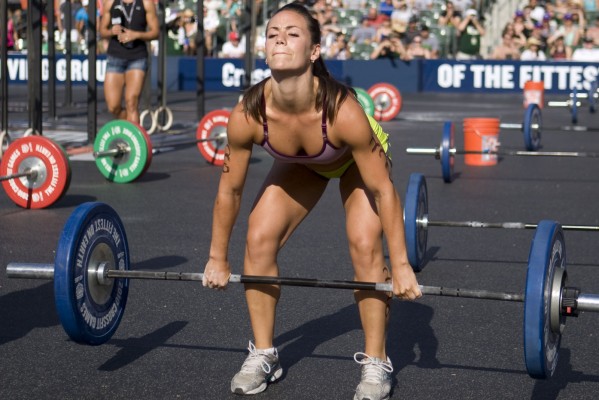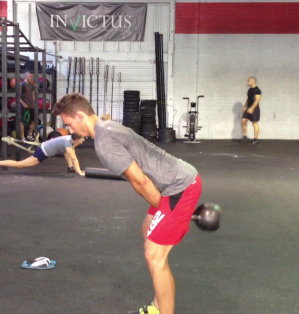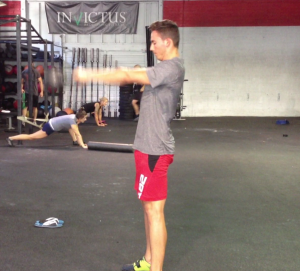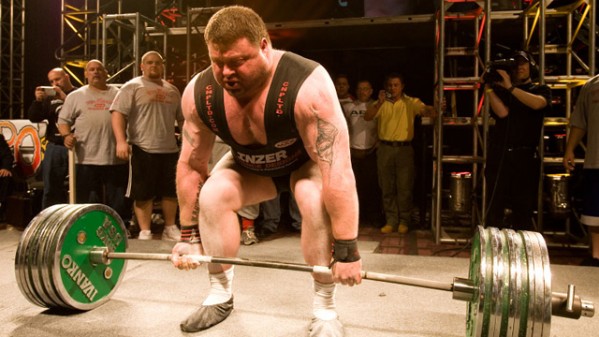
What do you have in common with a Pez dispenser?
Written by C.J. Martin
What do you have in common with a Pez dispenser? Nothing . . . I hope.
For anyone unaware of how a Pez dispenser works, let me provide a simple breakdown. The Pez dispenser is kind of like an action figure with a long skinny body that holds gross little sugar pellets. It’s magic is in its disproportionately large head, which can take on the image of just about any superhero, cartoon character or famous figure. To dispense the candy pellets, you simply tip the head back, helping your little superhero friend hinge at the neck and look to the sky. Boom! A pellet spits out the front of its neck.
The Pez dispenser if pretty cool if you are a child and your favorite superhero is popping sugar pills out of his or her neck for you. The Pez dispenser is not, however, a model for good functional movement.
That should seem pretty obvious, but next time deadlift, kettlebell swing or any other hip hinging movement pops up in training, take a look around you and make sure your friends aren’t doing their best Pez dispenser impersonation. If they are, it’s more likely that they will be spitting out vertebra than sugar pellets.
Hinge Your Hips, Not Your Neck
The problem typically arises as the athlete hinges at the hips – bends over to pick up the barbell, or bends forward to allow the kettlebell to pass between the legs. Many athletes are accustomed to fixing their gaze on the horizon throughout the movement. This is a fault that creates the dreaded Pez dispenser syndrome. If eyes remain on the horizon as the athlete hinges at the hips and bends forward, the cervical spine has to compress. (The photo above of Camille from the 2010 Games is a nice example of the Pez-like posture. Don’t worry, she has fixed the problem and is MUCH stronger now.)
Spinal mechanics are a big deal not only because I want to keep your back and neck healthy, but also because deviations of posture cause the central nervous system to reconsider whether you should be applying maximal force.
To put it simply, your brain signals your muscles to contract – and how hard to contract. That freeway of signals runs along your spine. Just as you would apply the brakes on your car if you were speeding along the highway and came upon a sharp turn (kink) in the path, your brain also slams on the brakes and limits the signals sent to those force producing muscles.
This is a gross simplification of an important topic that is likely too geeky for most of you out there who just want to figure out how to be the best athlete you can be, so let me break it down even more simply for you . . . a fixed, neutral spine throughout movement allows you to run faster, lift heavier and train longer.
(If you want more information on this important concept, I strongly suggest reading this article – Packing in the Neck by Charlie Weingroff. Also, check out the work that Jesse Burdick and Mark Bell are doing with SuperTraining, which has spread these concepts to both the powerlifting and CrossFit communities. K-Star has been talking about this stuff for a long time as well, and not just when it comes to heavy lifting, check out his series on head position faults in gymnastics movements.)
The Sexy Double Chin!
As a coach, I want to make sure all of my athletes have a simple concept and cue to remind them of the best, most efficient movement mechanics. At Invictus, we coach our athletes to develop a fondness for the sexy double chin when performing any hip hinging movements – like deadlift and kettlebell swings. While it might not sound terribly appealing, creating a sexy double chin puts our athletes into an optimal position at the cervical spine, which in turn allows for better breathing and functioning of the central nervous system.
To create a sexy double chin, simply stand as tall as possible, and then try to pull your chin as far back toward your spine as possible. Your chin and gaze should not tilt up or down, but rather remain neutral as you pull your chin back.
Once the athlete has created the sexy double chin, it’s important that they maintain that position throughout the entire range of the movement. This will be an adjustment for many athletes, but we must begin to understand that chin and gaze must follow the angle of the torso throughout the range of motion. Check out the two photos below of our very own Coach Shane Farmer performing kettlebell swings. Notice that his chin and gaze stay in line with the angle of his torso, resulting in a gaze at the bottom position that is closer to the floor than the horizon, and a gaze at the top that is straight to the horizon.


For good measure, here’s a photo of Andy Bolton, who holds the world-record in the deadlift. No Pez dispenser there.

Now, get to work on creating a “sexy double chin,” demand that your training partners do the same, and watch your lifts go through the roof.
awesome article!
Amazing! This blog looks just like my old one! It’s on a totally different subject but it has pretty much the same page layout and design. Excellent choice of colors!
I use the same cue for on shoulder press/push press/push jerk for keeping the head out of the way of the bar path…like the transfer though to other moves!
CJ – Great post. Love the pez dispenser! Cody – Great question. The amount of damage to the spine is related to the amount of force going through the tissue (how heavy it it and how fast it moves). Low force causes low damage, high force causes high damage. Therefore, we want the spine as neutral as possible when the force is the highest and can afford a lesser position with lower forces. The greatest level of force in the neck for dead lift, kettlebell swing, and the CF-Style, touch and go reps for Olifts is at the bottom. That… Read more »
While I love K-Starr’s approach to this movement fault, I would argue that this is a good approach for the deadlift, KBS, and other hip hinge dominant movements, but that it is incorrect for Olympic lifting. While a severely overextended cervical spine is always a movement fault, I believe a moderate amount of extension is vital in these lifts. This is due to the fact that line of sight becomes more important during the Olympic lifts. As an example, Olympic weightlifters are taught to pick a spot above the horizon and stare at it until the completion of the lift.… Read more »
Just to clarify, this is taught to improve the head position when receiving the bar on the clean or snatch, not to improve power off the floor, as any downward inclination of the eyes or head on the catch will often lead to a miss.
Just a question. A lot of coaches tell athletes to keep a horizontal plane of ‘gaze’. If we do the double chin syndrome, do we keep our eyes gazed at the spot on the ground in the start position? (I noticed Coach Farmer in the top position gazing at the floor)
I will admit, I am a front squat pez dispenser MASTER. Time to let go of my title. 🙂 awesome post CJ. I am sure Camille had some good giggles over it!!!
Benedikt Magnusson has the world record deadlift!
iceland baby!
Nice post! I can’t wait to share this with others. Coach, what is your opinion on neck position at the bottom of a snatch or clean?
solid post mastaahhhh. Is it cool to use the sexy double chin in everyday life? Like while talking and eating?
Only if you are adorned with the holiday cap that I have seen you wearing in every Facebook photo in the last 48 hours.
Does that dude even have a neck?! Just kidding…. 🙂